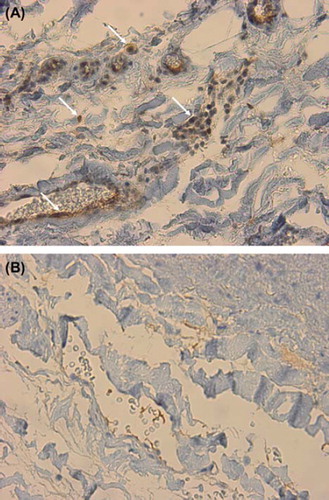Figures & data
Figure 1. Representative photograph (× 40) of aortic adventitial wall immunohistochemistry of C4d during ascending aortic dilatation (A) and during ascending aortic dissection (B). Note positive C4d staining (arrows) in A suggesting stabile aortic wall during aortic dilatation.

Table I. Patient demographics.
Table II. Operative details according to surgical evaluation of extension of diseased aorta.
Table III. Histology and quantitative immunohistochemistry.
Table IV. Immediate postoperative outcome.
Figure 2. Receiver operating characteristic curve (ROC) analysis of C4d associated with stabile nondissecting ascending aortic dilatation (A) and histologically defined aortitis (B). C4d is significantly associated with the prevalence of nondissecting ascending aortic dilatation (AUC 0.792; SE 0.053; p = 0.000; 95% CI 0.688–0.895, A), but not with aortitis (AUC 0.523; SE 0.069; p = 0.752; 95 % CI 0.388–0.658, B).

